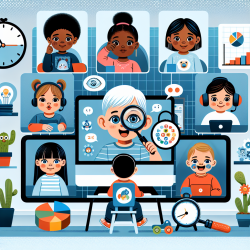Welcome to the world of special education in Connecticut! Navigating the landscape of special education services can be complex, but with the right resources and understanding, we can ensure that every student receives the support they need. This blog aims to simplify and highlight key aspects of the SPECIAL EDUCATION PROCEDURES AND PRACTICES MANUAL for Connecticut.
Introduction
The SPECIAL EDUCATION PROCEDURES AND PRACTICES MANUAL is designed to foster a shared understanding of the statutory and regulatory requirements for providing special education and related services to eligible students in Connecticut. While the use of this manual is not mandatory, it serves as a valuable resource for educational stakeholders to improve outcomes for students with disabilities.
Key Highlights
Understanding the Manual
The manual is a comprehensive guide that covers various aspects of special education, including definitions, processes, and legal requirements. Here are some of the critical sections:
- Definitions and Explanations: This section provides definitions of common terms used in special education, such as accommodations, adverse effect, and assistive technology.
- Free Appropriate Public Education (FAPE): This chapter outlines the IDEA requirements, ensuring that FAPE is available to all eligible students aged 3 to 21.
- Child Find and Referral Process: Details the responsibilities of the district to identify, locate, and evaluate all children with disabilities within its jurisdiction.
- Planning and Placement Team (PPT): Explains the composition and responsibilities of the PPT in developing, reviewing, and revising a student's Individualized Education Program (IEP).
- Evaluation and Eligibility: Covers the procedures for initial evaluations and reevaluations to determine a student's eligibility for special education services.
Important Considerations
Here are some essential points to keep in mind when using the manual:
- Adaptation to Local Procedures: School districts should adapt the manual to align with local procedures, including specific staff names, roles, and links to district-specific documents or websites.
- Legal Compliance: While the manual provides a comprehensive guide, it does not guarantee compliance with all statutory and regulatory requirements. Districts should consult with legal counsel for any interpretation or delivery of services related to these requirements.
- Continuous Updates: School districts need to update the manual as needed to remain current with federal and state special education statutes and implementing regulations.
Using the Manual Effectively
To make the most out of the SPECIAL EDUCATION PROCEDURES AND PRACTICES MANUAL, consider the following tips:
- Regular Review: Regularly review the manual to stay updated on any changes or new guidelines.
- Training and Professional Development: Ensure that all staff involved in special education are trained and familiar with the manual's contents.
- Collaboration: Foster collaboration among staff, parents, and other stakeholders to ensure a shared understanding and effective implementation of the procedures and practices.
Conclusion
Understanding and implementing the guidelines in the SPECIAL EDUCATION PROCEDURES AND PRACTICES MANUAL is crucial for providing effective and compliant special education services. By staying informed and working collaboratively, we can make a significant difference in the lives of students with disabilities.
For more information, please follow this link.










